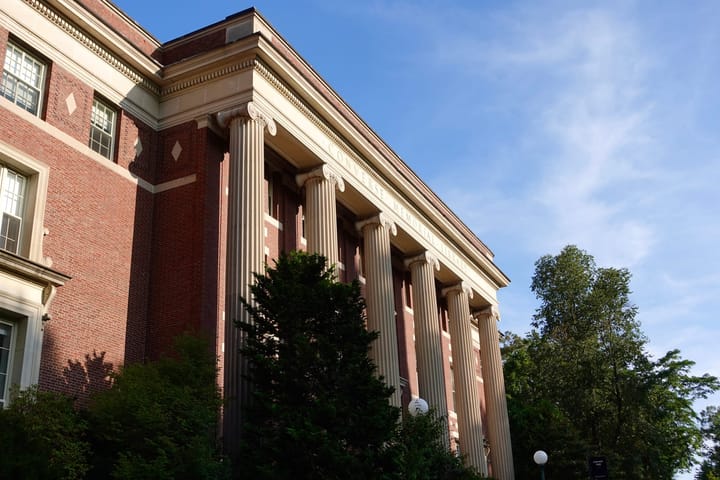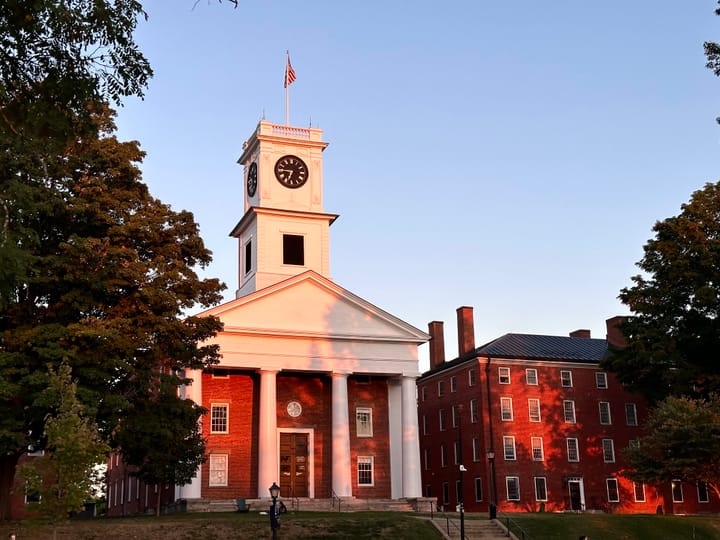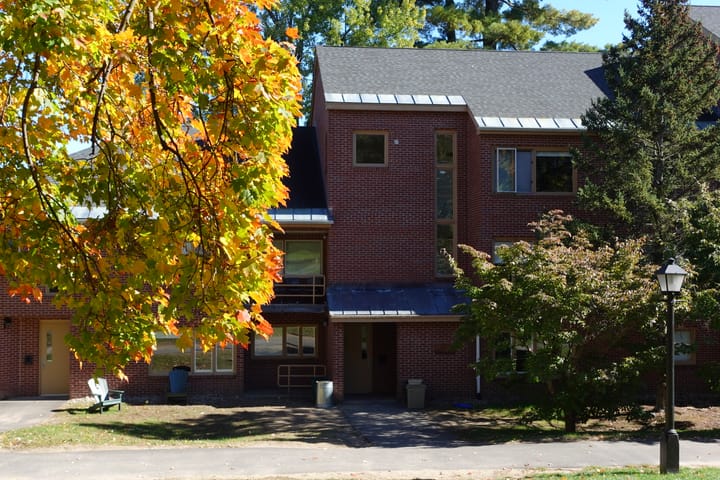Editorial: The Impact of Revoking Adobe Services on Student Initiatives
The Editorial Board criticizes the college’s sudden removal of Adobe Creative Cloud from student accounts, exposing how the decision undermines creativity, independent journalism, and student agency.
Just over a week ago, the college revoked Adobe Creative Cloud access from students’ accounts. Only those who need it for a course can access these services, after a lengthy request process with IT. Although students still have access to other Adobe services, the loss of Creative Cloud has huge impacts on the college’s creative community. Previously, students could use these services to design posters, edit videos, and produce art and publications that animate campus life. By removing Creative Cloud access without providing any detailed advanced communication (it was hidden deep in the Daily Mammoth), alternative options, or a plan for the future, the college has gutted student publications and artists of the tools they need to express themselves.
From an artistic perspective, the sudden loss of Adobe Creative Cloud marks another step in the slow erosion of artistic presence on campus. This decision exacerbates the already quiet decline of student art on our campus. While organizations such as The Indicator, The Lilac, and other publications have been integral to maintaining Amherst’s student art ecosystem, there has been a feeling that our campus is no longer as “artsy” as it used to be. Moreover, the use of Artificial Intelligence (AI) generated work in the Science Center Cafe, Frost Library Cafe, and Valentine Dining Hall for their menu further reflects institutional indifference toward art. Additionally, the college still supplies students access to services that use AI, like Grammarly — despite the fact that some faculty members have banned it explicitly in their syllabi. The contradiction is striking: Students are often barred from using AI to enhance their work, yet the college freely deploys the same technologies for its own purposes. Why couldn’t the college commission local or student artists (or even just take a photo of the food and drink), especially at an institution that asks its students to be so cautious about using AI?
For The Student, the sudden loss of Adobe Creative Cloud was more than an inconvenience — it directly disrupted our ability to publish. During The Student’s production night last Tuesday, editors arrived to find that Adobe InDesign, which is essential for assembling the paper’s print layout, was no longer available on the computers in our newsroom. We had reached out to IT only to be told that, since these are technically public computers, we cannot install Adobe Creative on them. Moreover, private requests to reinstate InDesign so editors could work from their personal devices were denied.
To meet deadlines, staff were forced to rely on one editor’s personal Adobe account — an unsustainable solution that highlights how student publications are dependent on institutional support and resources. Other editors resolved to paying out-of-pocket expenses to maintain their own access. This is unacceptable. We, nor any other student publication, should not have to rely on personal expenses to ensure that the student body stays informed. By stripping The Student’s access to Adobe InDesign, the college is directly obstructing the only press covering campus news, thereby limiting spaces for student expression and discouraging campus dialogue.
The Student is also one of the few independent institutions on campus that can speak out against the administration and hold them publicly accountable. Cutting access to the very tools that make publication possible — whether through intentional decision-making or negligence — undermines that independence and restricts students’ ability to publish, critique, and freely engage with their institution. For a college that so often celebrates its commitment to inquiry and dialogue, this decision is troubling.
It was not just The Student that was affected by these sudden, poorly communicated changes. The Indicator’s production for its fall semester issue was halted. When its staff asked for clarification from the administration, they were directed from one office to another in a familiar bureaucratic loop — either from a lack of communication, or to defer responsibility. IT referred them to Student Engagement and Leadership (SEL); SEL directed them to the Budgetary Committee; the Budgetary Committee eventually offered limited funding to The Indicator. However, this funding fell under the Budgetary Committee’s lending rules, which is usually not meant for long-term software access: Only certain individuals in the organization received funding, and only if they paid for the software out-of-pocket first and received reimbursement later.
Moreover, IT suggested that The Indicator staff use public computers in Frost. The advice was not only unhelpful but absurd: These computers did not have Adobe installed, and, according to IT’s response to the Student, public computers could not have Adobe installed either. Expecting student publications to rely solely on public resources for complicated design work is an unrealistic standard when there are pressures to fulfill deadlines. Such organizations deserve spaces to produce the professional-quality work they envision without the worry of waiting on a public computer to free up. It is a small but telling example of how the administration’s policies can be out of touch with student needs.
No office could clearly explain why Adobe access had been cut from students or what students were expected to do next. This cycle of deflection reveals an alarming bureaucratic incompetence and inconsistency, as well as a refusal to take accountability and actively address student critiques. This is not simply a consequence of poor planning, but a deeper disregard for the students whose work relies on these resources. By removing Adobe without consultation or explanation, the administration signaled that the creative labor of student journalists, designers, and artists is peripheral — an afterthought rather than an integral part of campus life.
Under the college’s new system, students must now fill out a form to request Adobe access — and only if it can be justified for a specific academic course. This gatekeeping assumes that creativity belongs exclusively within the classroom. It is a narrow and deeply incomplete understanding of how Amherst students actually think, create, and collaborate. It ignores how much of our campus’ vibrant creative life happens outside formal coursework. These activities are vital to creating a stronger sense of community, including student newspapers and literary magazines, in the design of theater posters, campus jobs and student event materials — all of which likely rely on Adobe Creative Cloud tools. The new policy’s one-size-fits-all approach overlooks the particular needs of student media who depend on these tools — and, in doing so, it undermines the very “liberal arts” ideals the institution claims to uphold.
While the recent cancellation of Winter Festival makes it easier to guess why the administration cut student access to Adobe’s services easier, it still has not offered an official explanation. There is no acknowledgement of the impact, no proposed alternatives, no plan to make access easier. What’s clear, however, is that this process has left students feeling not just unsupported, but disregarded.
The Editorial Board understands that Adobe licenses are not cheap — especially since some editors had to buy it themselves for the last production night — but their value far outweighs their cost. If affording licenses for everyone is too expensive, that does not prevent the college from giving licenses just to the students and organizations who need it, rather than limiting it to solely academic purposes.
These tools are central to students’ creative, professional, and academic development — the same development Amherst proudly claims to nurture. This revocation overlooks the fact that many design-based internships and jobs prefer students to have proficiency in InDesign and other Adobe features. Despite the college’s purported emphasis on career readiness and resume-building across all fields, it seems as though it is comfortable inhibiting the futures of its growing artists and designers.
The question now is how Amherst moves forward — and what role students should play in determining their own access to the tools they need. Some have jokingly suggested returning to “analog” methods such as hand-drawing posters like the Zü does for party flyers. But these improvisations highlight a troubling reality: What should be a choice — exploring alternative mediums for creative expression — has become a necessity forced by administrative neglect. Should it fall on the student body to identify every resource necessary for success, to navigate bureaucratic forms and justify creative work that was previously supported without question?
The answer is no. Access to essential tools should not be a privilege to be petitioned for; it should be a given, a baseline expectation for an institution that claims to value intellectual and artistic growth.
Unsigned editorials represent the views of the majority of the Editorial Board (assenting: 14; dissenting: 0; abstaining: 0)





Comments ()